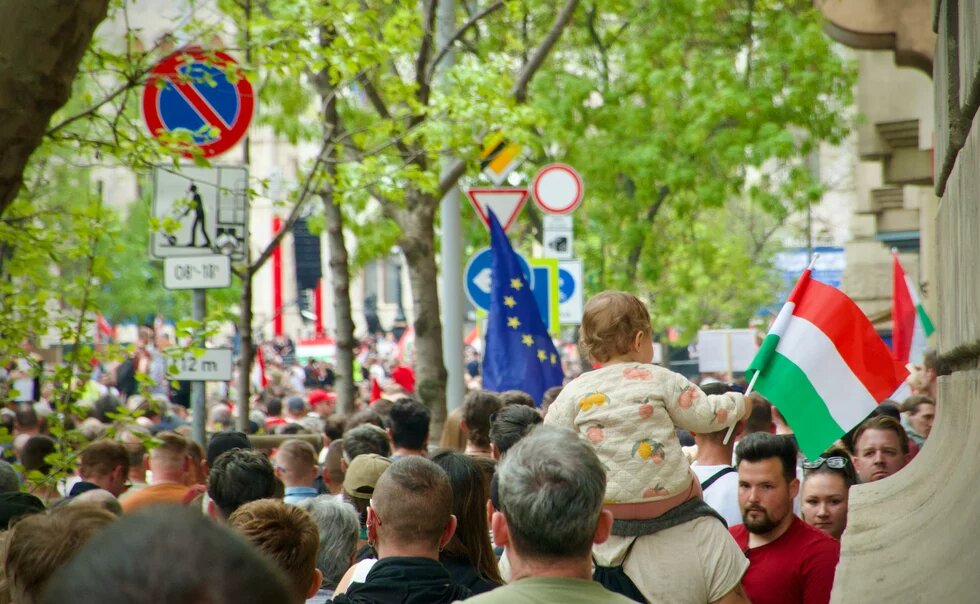Fidesz performed worse in terms of vote share than in any previous European Parliament election; however, this does not mean they were a total failure. The election results are unlikely to derail the Orbán regime in the short term, but a newcomer has entered the political arena who could be a serious challenger in the 2026 parliamentary election. At the European level, since the far-right parties are likely to remain fragmented due to ideological and political differences, their influence on decision-making remains limited, while Orbán seems to be swimming against the tide even on the far right.

Hungary reflects European trends by shifting to the right in the European Parliament. Fidesz’s former political family, the European People’s Party (EPP), is the biggest winner of the European elections, as the group managed to increase its MEPs by 12 to 188, more than a quarter of the 720 MEPs in the legislature. The EPP welcomed Péter Magyar with open arms, and the accession of his Respect and Freedom (TISZA) party was a significant boost to the political family. Hungary’s Christian Democratic People’s Party (KDNP), Fidesz’s seemingly independent ally, which remained a member of the EPP even after Fidesz left in 2021, then left the group, announcing it would not sit in the same group as TISZA. The EPP’s former coalition partners, the Socialists and Democrats (S&D), remained stable, losing three seats, while the liberal Renew Europe lost 28 seats. Hungary had five MEPs in the S&D and two MEPs in Renew Europe in the previous legislature and will now have two MEPs in the S&D and 0 in Renew Europe. While the far-right parties made some gains, it was not a groundswell. Giorgia Meloni’s European Conservatives and Reformists (ECR) are expected to have 83 seats (14 more than after the 2019 election), and Marine Le Pen’s Identity and Democracy (ID) is on track to have 58 seats (nine more than after the 2019 election). Fidesz and Our Homeland (Mi Hazánk) aim to join one of the far-right political groups, but it is already perfectly clear that neither are welcome in the ECR. As a result, 19 of the 21 Hungarian MEPs will belong to one of the right-wing political groups.
Orbán’s quest for a new political home
While Fidesz had one of the highest vote shares in any Member State, the party’s next political family is still unclear. Only the Romanian socialist PSD and centre-right PNL coalition list, with 48.55% of the vote, and the Maltese Labour Party with 45.26%, exceeded Fidesz’s 44.82%. Shockingly, the party performed worse in terms of vote share than in any previous European election, but in the end, this result was still enough to win more than half of the 21 seats. The Fidesz-KDNP delegation of 11 MEPs is the 15th largest in the European Parliament.
Orbán has repeatedly urged Meloni and Le Pen to form a broad coalition between the ECR, the ID, and the far-right newcomers. If the two groups joined forces, they would become the second-largest political family after the EPP. However, this vision is unlikely to materialize because the far-right parties are divided not just by ideological differences, but also by differing political interests. As a result, Orbán lobbied hard to accede to the ECR. The Czech, Finnish, and Swedish ECR parties even threatened to leave the group if Fidesz joined. However, Orbán's efforts to reconcile the internal opposition within the political family have failed, as the ECR group opted to welcome the far-right Alliance for the Union of Romanians (AUR) instead of Fidesz. Despite Orbán's seemingly good friendship with Meloni, this was not enough to secure an ECR membership and to keep AUR out.
It seemed that the Hungarian governing party will be either left with the ID, which for the time being (at least until the French snap election finishes) is further away from power and influence, or it will remain independent, with no impact on policy making in the European Parliament. The possible restructuring of ID, since the group expelled the Alternative for Germany (AfD), could have opened the door for Fidesz. Viktor Orbán has so far refrained from joining the radical group, as cooperating only with the AfD would jeopardize the remnants of the goodwill they enjoy from the Christian Democratic Union of Germany (CDU). If it were to enter, Fidesz would be the second-largest delegation after the National Rally (RN) within the ID group. However, even with the Fidesz-KDNP delegation of 11 MEPs, the group would still only be fifth in the ranking of political groups by size. The prospect of far-right victories in France and Austria may be attractive enough for Fidesz to join the fraction. The ID group will meet on the 3 July to discuss the composition of the group.
In a recent development, Orbán announced plans to form a new far-right bloc in the European Parliament. He launched “Patriots for Europe” an alliance with Herbert Kickl, the leader of Austria’s Freedom Party, and Andrej Babiš, the former prime minister of Czechia. However, the alliance will need to attract lawmakers from at least four more EU countries to successfully form a group in the new parliament.
Tisza party: A strong newcomer
TISZA skyrocketed in the European elections with 29.60% of the vote and could play a significant role in the EPP. With seven seats, TISZA will have the sixth largest delegation in the political family, after Germany, Poland, Spain, Romania, and Italy, alongside the Greeks and the Portuguese. This political weight is significant because, within the EPP, the parliamentary committee seats are allocated according to the size of the national delegations. Therefore, TISZA MEPs could obtain important rapporteur and coordinator positions. Additionally, TISZA could establish important formal and informal ties with some of the largest European parties, such as the German CDU-CSU, the Polish PO, and the Spanish PP.
The established opposition parties will play insignificant roles in the European arena. Former PM Ferenc Gyurcsány’s Democratic Coalition (DK) received 8.03% of the votes, and its number of MEPs decreased from four to two within the ranks of the S&D, so its influence in the upcoming legislature will decrease proportionally. The liberal Momentum lost its two MEPs as the party failed to pass the 5% threshold for the European elections. The far-right Mi Hazánk – like the former Jobbik MEP – is likely to sit with the non-affiliated parties or to join a far-right group led by the Alternative for Germany (AfD). Whether the AfD can organize a group with 23 MEPs from at least seven countries is highly doubtful. Significantly, the AfD is trying to return to the ID group after getting rid of their top candidate, Maximilian Krah. Whether Mi Hazánk can join the ID group may depend on where Fidesz ends up.
Can Hungary help make Europe great again?
Hungary will take over the rotating EU Council presidency on 1 July under the slogan “Make Europe Great Again.” The Hungarian government will have little time to advance key legislative files due to the institutional interregnum with the setting up of the new European Parliament and the Commission. Nevertheless, Hungary will use the presidency to promote its policy priorities on migration, defence, competitiveness, demography, and the EU’s management of external borders. Hungary also seeks to reform the Common Agricultural Policy to make it more “farmer-centric.” The Hungarian government is also committed to advancing the enlargement process with regard to Moldova, Georgia, and Ukraine.
The election results are not expected to shake the Orbán regime, but the new challenger could pose a serious threat in the 2026 parliamentary election. For every three Fidesz votes, there are two TISZA votes in Hungary (45% vs. 30%). The high result could provide a good basis for the emergence of a strong, united opposition force against Fidesz by 2026. To be this force, TISZA must be able to absorb the remaining opposition voters and sway more voters away from the Fidesz camp than at present. For this, the two-month-old TISZA needs to build a real party organization with strong candidates in the 106 single-member constituencies. The grace period in which Magyar can reach the masses online organically, without advertising, will soon be over. The 22 months until the 2026 general elections is only a seemingly long time.
Building a strong opposition
TISZA removes the established opposition parties from competition. The following two years will be a period of slow agony for most of the losing opposition parties. Besides TISZA, only DK and Mi Hazánk seem to be able to survive. Green Budapest mayor Gergely Karácsony was re-elected with an extremely low margin (41 votes, so snap elections cannot be ruled out yet) and the composition of the Budapest City Council will be fragmented, making it challenging for the mayor to forge a majority.


